Snapshot of the Roaring 20s – Isherwood’s Berlin Tour

Snapshot of the Roaring 20s – Isherwood’s Berlin Tour
In winter we explore more hidden spots of Berlin together with our team of seasoned guides. On one of these excursions our guide Brendan took us on a fascinating journey through Schöneberg. It immersed us in the Weimar Era – the so-called “Roaring Twenties” seen through the eyes of British writer Christopher Isherwood. Brendan has been leading these tours for years and has written a number of novels set in 1920s Berlin.
Brendan was kind enough to write a blog post for us about this fascinating time in Berlin, full of contradictions and glamour. You can find out more about Brendan’s Isherwood tour & his literary work at the bottom which we urge you to check out for yourself.

We started off at U Nollendorfplatz where Brendan gave us an introduction into the years following World War I in Germany & Berlin.
A Brit’s Sojourn in Weimar-Era Berlin
‘ I am a camera with its shutter open, quite passive, recording not thinking.’
This is the first line of the iconic novel, Goodbye to Berlin, by British writer Christopher Isherwood. It sets the tone for the observational style of writing that was to become his signature.
Isherwood made Berlin his home for four years between 1929 and 1933. These were the dying years of the Weimar Era, a republic born out of the catastrophe of the First World War. It was an extraordinary time for Germany. Isherwood documented daily life in his extensive diaries eventually totalling four, weighty volumes and a million words.

Christopher Isherwood and his friend WH Auden who he visited when he first came to Berlin in March 1929 (Copyright: Carl Van Vechten, Public domain, via Wikimedia Commons)

In front of the house on Nollendorfstraße 17 where Isherwood lived during his time in Berlin.
From Books to Broadway: Isherwood’s Berlin Stories Inspire Cabaret
Goodbye To Berlin, and his subsequent book, Mr Norris Changes Trains went on to become the basis for the stage and Oscar-winning screen musical Cabaret. Ninety years on from the first publication of the books and fifty years since Liza Minelli first played the iconic character of Sally Bowles on screen, the material is as relevant now as it has ever been and continues to captivate audiences worldwide.
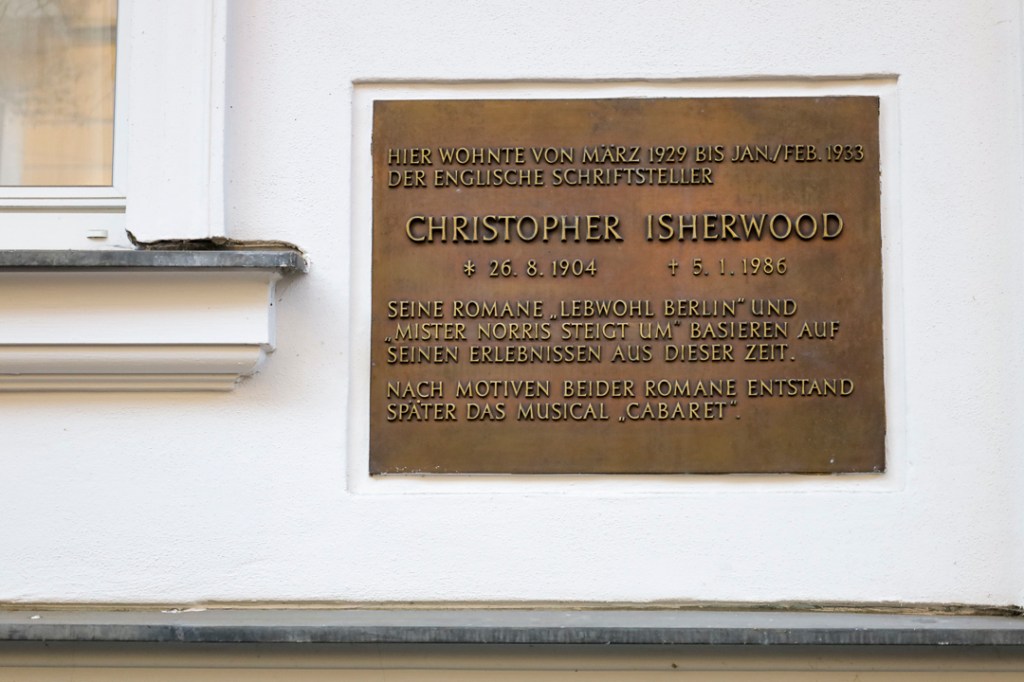
This plaque in German remembers Christopher Isherwood’s time in Berlin and the works inspired by it. Although more widely known in the English-speaking world, Isherwoods works are also available in German.
Birth of a Fragile Republic
To understand the context, we must rewind to November 1918 when the First World War ends, Germany is defeated, and Kaiser Wilhelm 2nd abdicates. A republic is declared and a communist revolution is threatening to sweep through the country.

This memorial inside U-bahn station Nollendorfplatz from 1926 is for subway construction workers who died fighting in WWI.
Berlin is a dangerous, lawless, almost ungoverned place. The city faces street fighting, rioting, and political chaos, with thousands of casualties within the next six weeks. Soldiers returning from war want to punish those in power for their supposed betrayal and countless political factions take any excuse to stir up hate and brawl in the streets.
Weimar Constitution: A Beacon of Hope amidst Chaos
Amongst this anarchy, in the middle of January 1919, elections are held and Friedrich Ebert’s coalition wins pledging change and a whole new constitution for the people of Germany. They want the sacrifices they made and the tragedies they endured during the War to mean something. Ebert promises a fresh start. Due to Berlin’s instability, however, Ebert moves his fragile coalition two hundred kilometres south to the historic town of Weimar. There, over 8 intense months, they craft the `Weimar Constitution’ answering those desperate calls for change by including worker’s rights, housing and equal voting for men and women. But then, as now, those sorts of changes are an uphill struggle even at the best of times.
Despite their best efforts, the Weimar Republic only lasts fourteen years, marked by seventeen changes of government and thirteen chancellors. The ‘Roaring Twenties’ or ‘Golden Twenties’ are not roaring or golden for all, as mass unemployment and rampant hyperinflation in 1923 wipe out the life savings of a generation of Germans.
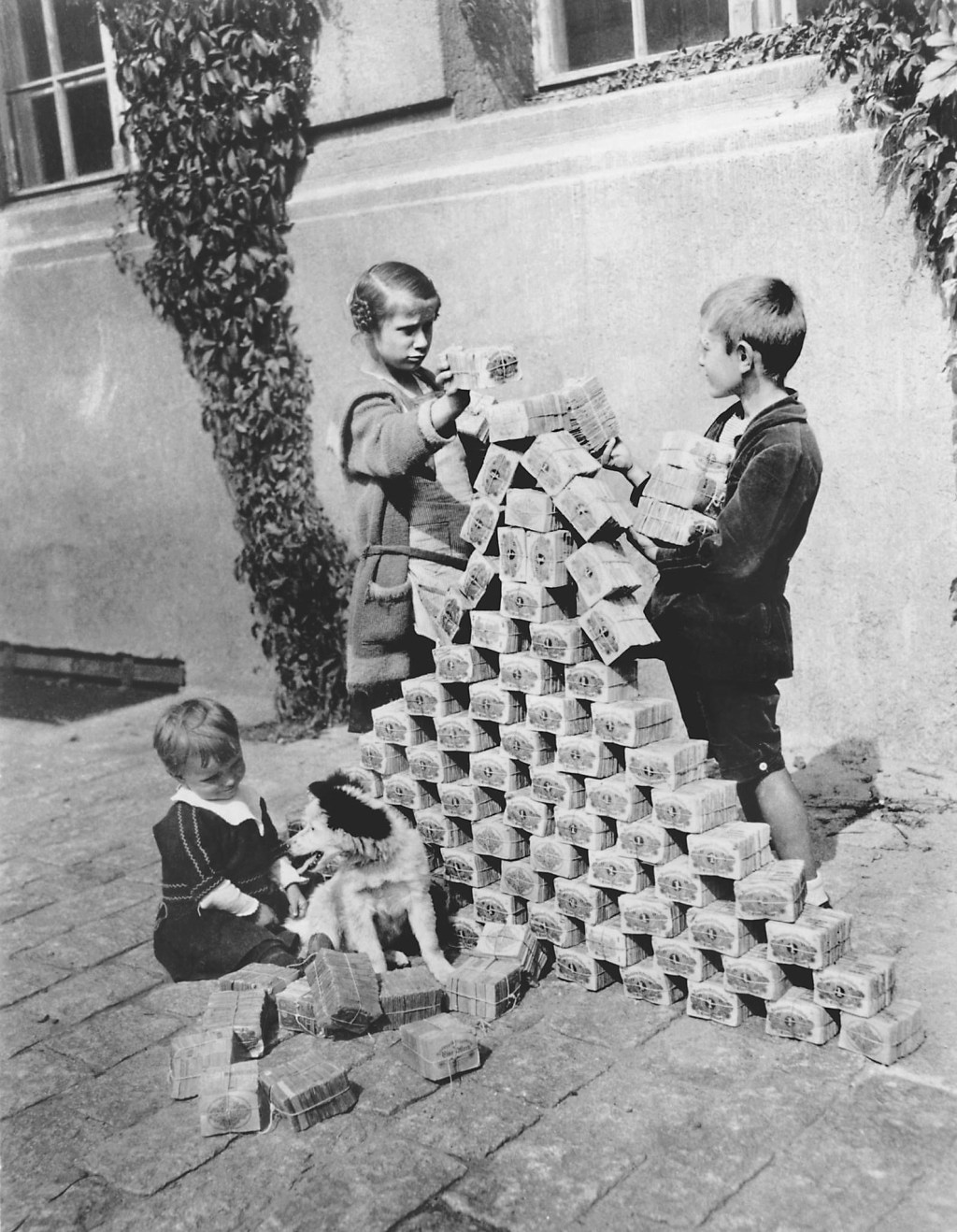
Children playing with valueless inflation era banknotes in 1923 (via Wikimedia Commons)
The Contradictions of the “Roaring Twenties” in Berlin
Berlin at this time is a city of huge contradictions. It is modern, sophisticated, technologically advanced and the third largest city in the world. But it is also home to large numbers of impoverished people that live in housing that is no longer fit for purpose. The ‘Hobrecht’ housing plan of the late 1900s, based around courtyard blocks catering to different classes of tenants and highly acclaimed at the time, was showing its age and its many faults.

A typical Berlin apartment building from the 19th century in Berlin with a beautiful stucco facade. Towards the back these buildings usually stretched over 3 to 4 inner courtyards, with poorer people living further at the back in overcrowded apartments with very little light. After the war and inflation of 1923 that left big parts of the population penniless, formerly grand houses effectively turned into slums as there was no longer any money left for the upkeep of these buildings.
Dazzling Nights in Berlin: The thriving Cabaret Scene
The Weimar constitution abolishes censorship and, as a result, the arts, theater and cabaret are thriving. Under the umbrella term cabaret a multitude of genres explode, from the vast variety stages of the Friedrichstrasse with casts of hundreds to the tiny local ‘Tingel Tangles’ with a few diverse performers, playing for pennies. The name ‘Tingle Tangle’ derives from the sound of coins dropping onto a plate as it is passed around the audience to pay the performers.

Brendan showing the site of the legendary cabaret Eldorado – one of Berlin’s most famous nightclubs at the time. At Eldorado cross-dressing was tolerated and drag shows were part of the regular programme, making it one of the centres of Berlin’s thriving gay and lesbian scene in the 1920s and early 1930s. You can find out what happened to the Eldorado and its owners after the Nazis came to power on Brendan’s tour.
Thrill-Seekers and Dreamers: Berlin’s Allure in the 1920s
Berlin is cheap compared to other European cities and foreign currency is king. British Sterling or American Dollars go a very long way in the city. It becomes a mecca for thrill seeking tourists and those searching for freedoms and liberties denied to them in the cities and countries they call home. All manner of subcultures are available to those who know where to look. Berlin is a city where there is ‘not an itch that can’t be legally scratched’. Christopher Isherwood and his contemporaries flock to Berlin, drawn by its unique allure. Berlin is now… and there is no other city like it!
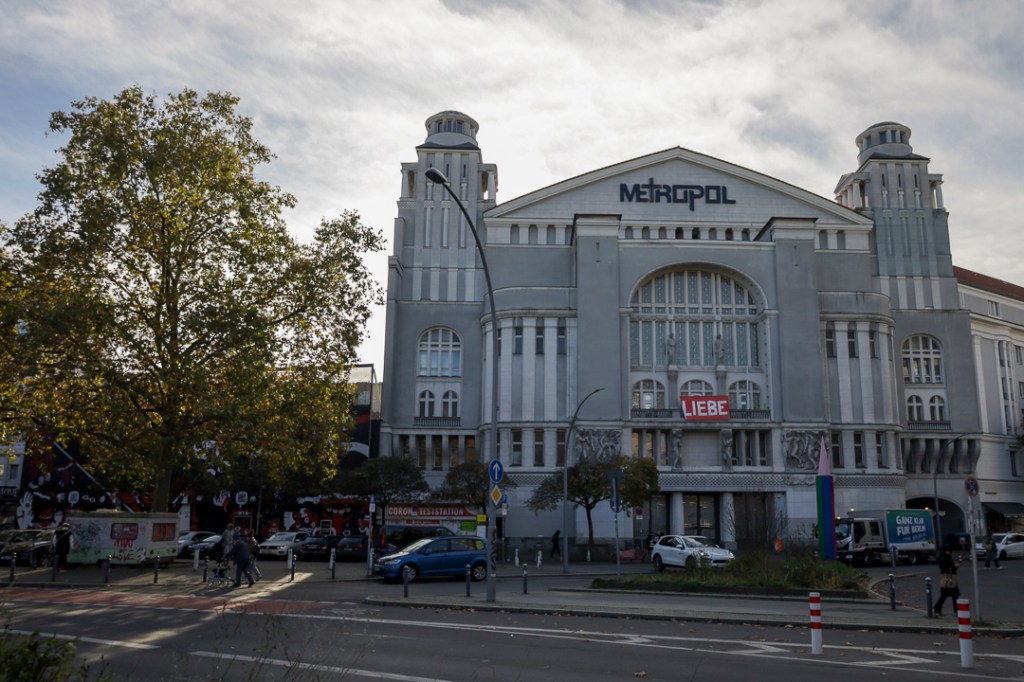
The facade of the Metropol, originally known as the Neues Schauspielhaus, is one of the few things on Nollendorfplatz to have survived the Second World War and subsequent reconstruction.
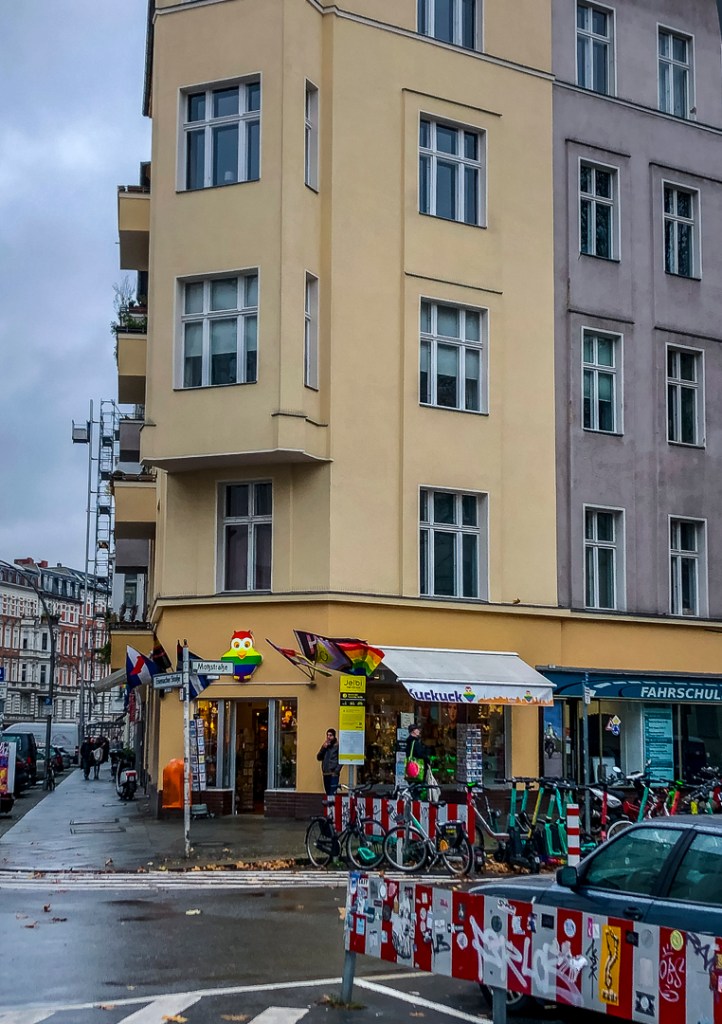
Isherwood’s former neighbourhood in Schöneberg is still at the heart of Berlin’s queer scene.
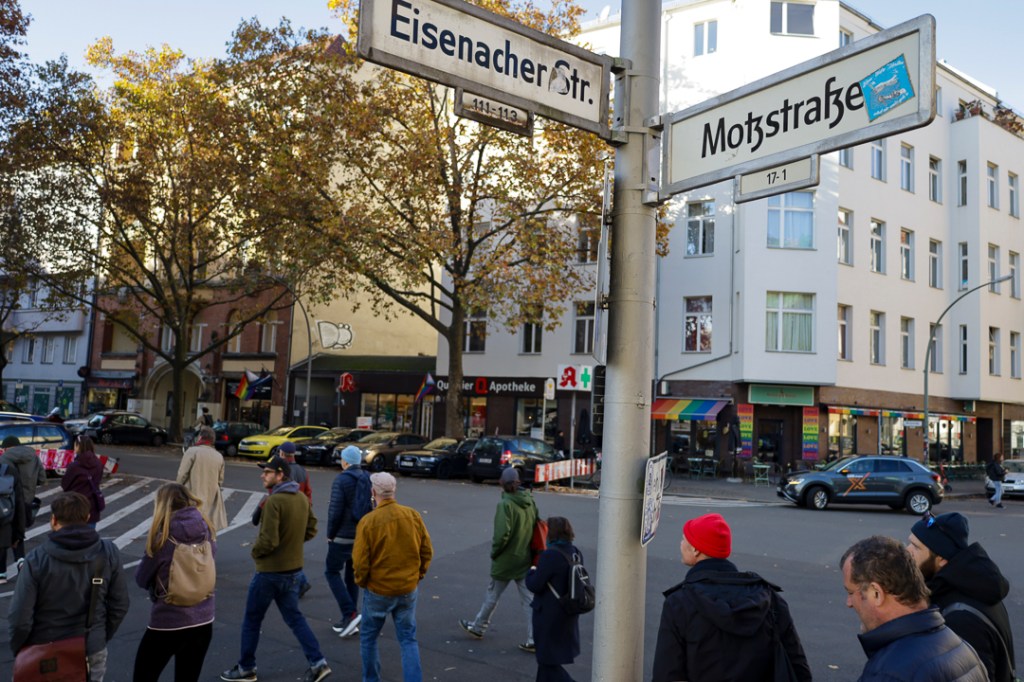
Berlin’s Descent into Darkness: The Rise of the National Socialists
But there are dark clouds on the horizon. The liberation and freedoms offered by Berlin and the constant instability of changing governments are rich fodder for the rising National Socialists. To them, Berlin is a city of sin and their support rises in the countryside. In the 1932 Reichstag elections the Nazi party wins fourteen million votes, equalling twenty nine percent of the electorate. In the previous thirteen years of the Weimar Republic, no party had ever won that level of support.
The writing is on the wall. People who have lost everything are being promised the world and nobody is challenging those promises. In January of 1933, the 85 year old President Paul von Hindenburg, appoints Hitler, as Chancellor. The establishment thinks he will not last, that people will tire of him as he will take the blame for the litany of errors made by previous administrations. They are wrong.
Shortly after Hitler takes power, the Reichstag burns to the ground. This is quickly followed by a raft of new laws that abolish democracy and make all political parties, except the National Socialists, illegal. This is the end of the Weimar Republic.
Isherwood’s Goodbye to Berlin: Witnessing the End of an Era
Christopher Isherwood leaves Berlin in May 1933. Just three days earlier he witnessed students and the Nazi Youth burn books on what is now Bebel Platz, Frederick the Great’s monumental forum to Prussian arts and culture.
If Isherwood had been a few more years into his career as a writer, it would have been his books burning there too that night. ‘Shame’ he shouted, but not very loudly.
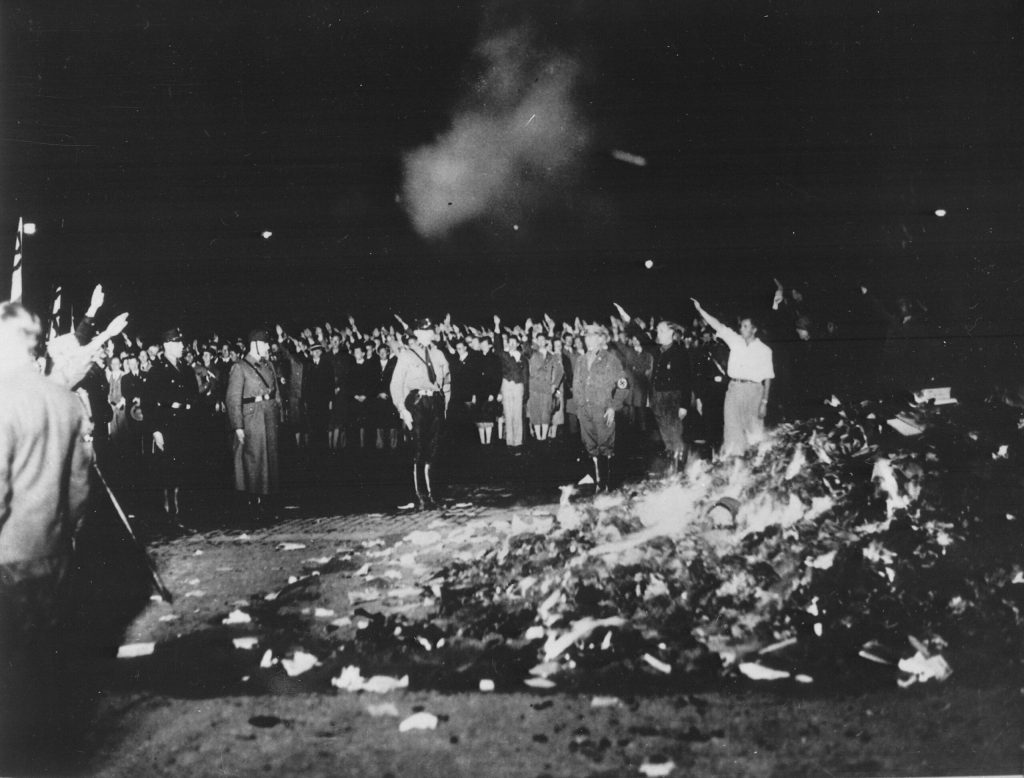
The book burning on Bebelplatz on 10/05/1933
(Copyright: Bundesarchiv, Bild 102-14597 / Georg Pahl / CC-BY-SA 3.0, CC BY-SA 3.0 de, https://commons.wikimedia.org/w/index.php?curid=5415527)
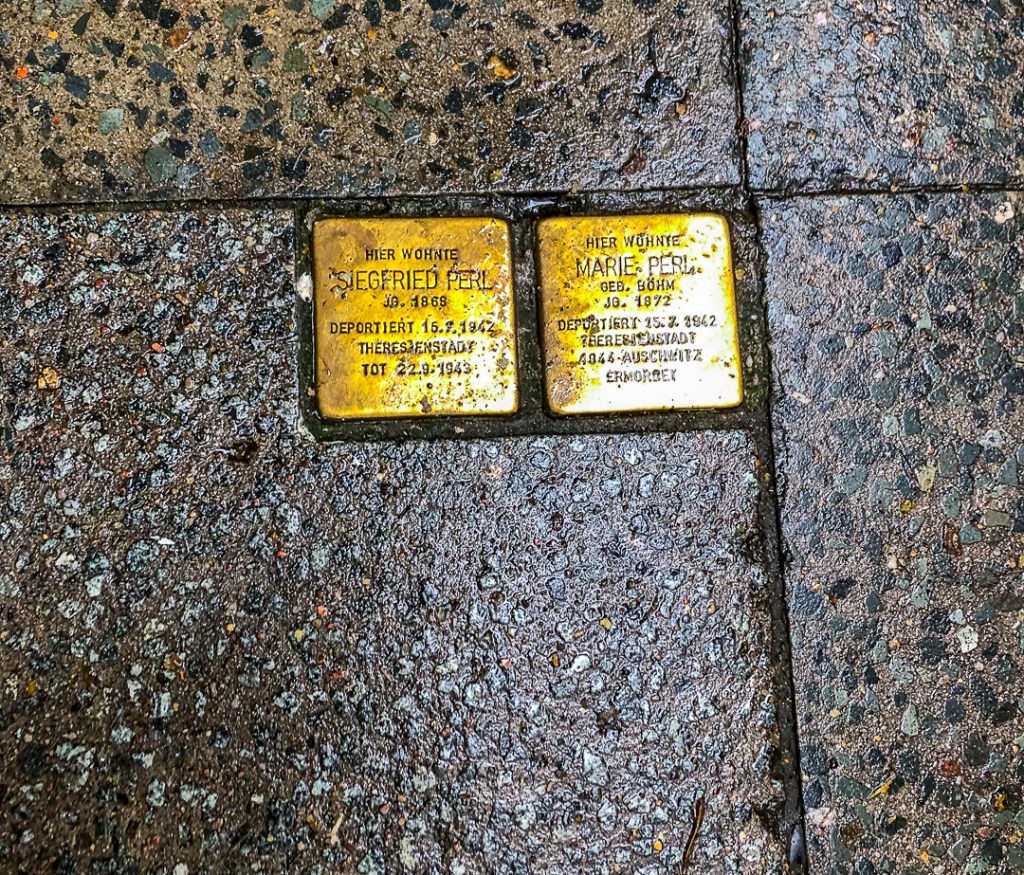
Stolpersteine in memory of Siegfried and Marie Perl, just a few metres from Isherwood’s former home on Nollendorfstraße. They were deported to Theresienstadt by the Nazis in 1942 and killed in 1943 & 1944.
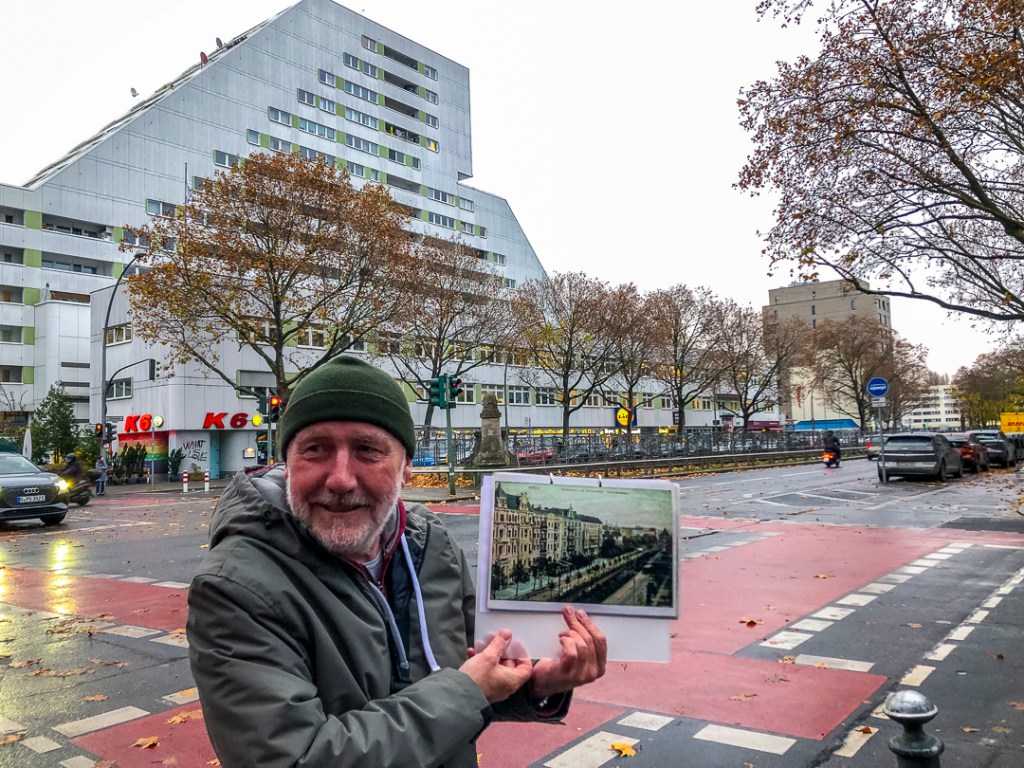
The surrounding grand buildings on Nollendorfplatz were almost completely destroyed during the Second World War, suffering further by random reconstruction in the 1970s.
Tour info & Contact
Thanks so much for the great insight and the wonderful tour! We recommend all of you to join Brendan on one of his tours – he is an amazing story-teller – either through Weimar Berlin on foot or on one of our own bike tours.
Isherwood’s Berlin Tour
Start: U-bahn station Nollendorfplatz (U1, U2, U3 & U4)
Time: every Saturday at 11.00h or by arrangement
Duration: 2 hours
Cost: 20 € per person
Booking via: http://www.isherwoods-neighbourhood.com/
Brendan’s first two novels, The Landlady and The Director are available in print at www.baxterjardine.com or through Amazon Kindle stores.
The third in the series “The Artiste” is due to be published in May and a fourth instalment is underway.

